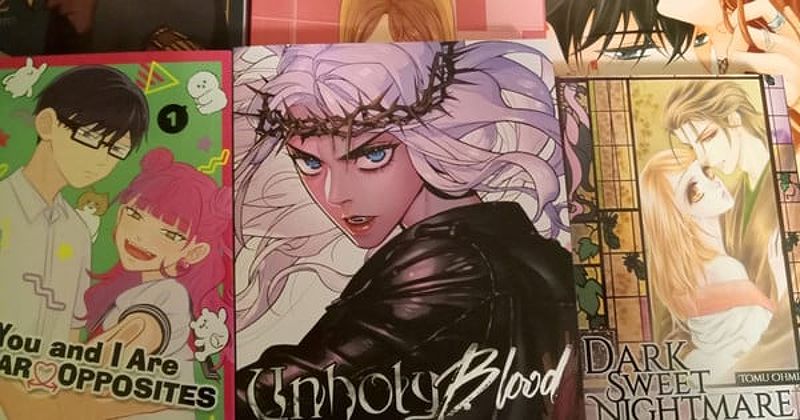Manhwa and Manga: Understanding the Differences and Cultural Significance

Learn about the distinct art forms of manhwa and manga, their cultural significance, and the differences between them. Explore the evolution of manhwa and its rise in popularity among English readers. Discover the unique storytelling techniques and sensibilities of manhwa, and how it represents its own cultural identity. Gain insights into the rise of webtoons and their impact on the manhwa industry. Find out how webtoons differ from traditional manga and the challenges they face as an art form. Gain a deeper understanding of the historical context and cultural influences that shape manhwa. Appreciate the artistic freedom and inclusivity offered by webtoons, and the visually stunning illustrations they provide. Experience the captivating stories of both manga and manhwa, whether online or in print.
Understanding the Cultural Significance of Manhwa and Manga
Manhwa and manga are two distinct art forms that have gained significant popularity worldwide. Understanding their cultural significance can help us appreciate the unique storytelling techniques and sensibilities they offer.

( Credit to: Animenewsnetwork )
Manhwa, or Korean comics, have faced challenges in gaining recognition among English readers. However, in recent years, efforts to promote manhwa as its own cultural identity have been successful.
On the other hand, manga, originating from Japan, has a long-established presence in the English-translated industry. The growth of manga has been exponential since its emergence in the 1980s.
The Rise of Manhwa and its Unique Storytelling Techniques
Manhwa represents its own cultural identity, distinct from manga. It is essential to acknowledge the unique storytelling techniques employed in manhwa.
Hallyu, the exportation of Korean pop culture, including manhwa, has contributed to its widespread availability. The rise of webtoons, a form of manhwa, has been particularly notable in the era of smartphones.
Webtoons, which are vertically scrolling comics, offer a seamless reading experience with full-color artwork and wide gutters. This format creates a visual flow akin to waves, appealing to the generation raised online.
Exploring the Differences Between Webtoons and Traditional Manhwa
While webtoons fall under the category of manhwa, they have their own distinct characteristics. Webtoons are specifically vertically scrolling comics, regardless of their country of origin.
Webtoons present unique advantages with their full-color artwork and seamless reading experience. However, they also face challenges when transferred to physical pages, particularly with two-page spreads.
The online serialization of webtoons allows creators the freedom to break gender barriers and tailor their works to their artistic preferences. Webtoons also tackle controversial topics, sexuality, and violence without hesitation, creating a more inclusive environment for readers.
The Historical Context and Cultural Influences Shaping Manhwa
Korea’s history with Japan has influenced the perception of manhwa and its distinction from manga. The atrocities committed by the Imperial Japanese Army during the mid-twentieth century have left a deep impact on Koreans.
Manhwa shares visual similarities with manga, but the shift to digital webtoons has allowed Korean creators to embrace a form that is predominantly Korean and distance themselves from manga.
Webtoons, with their structure and storytelling patterns, set themselves apart from traditional manga and showcase the unique cultural influences that shape manhwa.
Appreciating the Artistic Freedom and Inclusivity of Webtoons
Webtoons offer artistic freedom for creators to explore various genres and topics. They provide visually stunning illustrations with their use of full-color artwork.
The online publication of webtoons allows creators to tailor their works to their artistic preferences and break gender barriers. Webtoon platforms categorize webtoons by genre, creating a more inclusive environment for readers.
However, online serialization also brings additional pressure on creators, as they face immediate reader responses and the volatile nature of online platforms. This can impact their creative process and mental well-being.
The Captivating Stories of Manhwa and Manga
Both manhwa and manga offer a plethora of captivating stories, whether online or in print. They have evolved within their respective cultures and continue to engage readers with their unique narratives.
The availability of manhwa translations in English and other languages has increased, allowing a wider audience to enjoy the diverse range of stories offered by both art forms.
Netcomics, one of the early pioneers in English manhwa releases, continues to thrive and showcase the evolution of localized manhwa, including both traditional comics and webtoons.
SiteManga highly recommends for readers:
Which Manga Titles Are Fans Excited to See Animated in 2024?
My Hero Academia Fans React to Shocking Manga Chapter Details
Zoku Thermae Romae Sequel Manga Takes a Summer Break
One Piece Chapter 1103: Kuma’s Arrival and the Battle on Egghead Island





